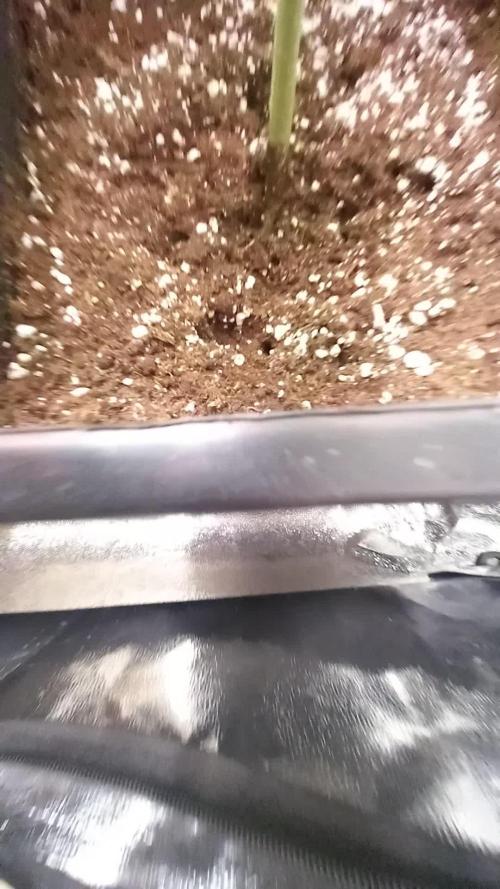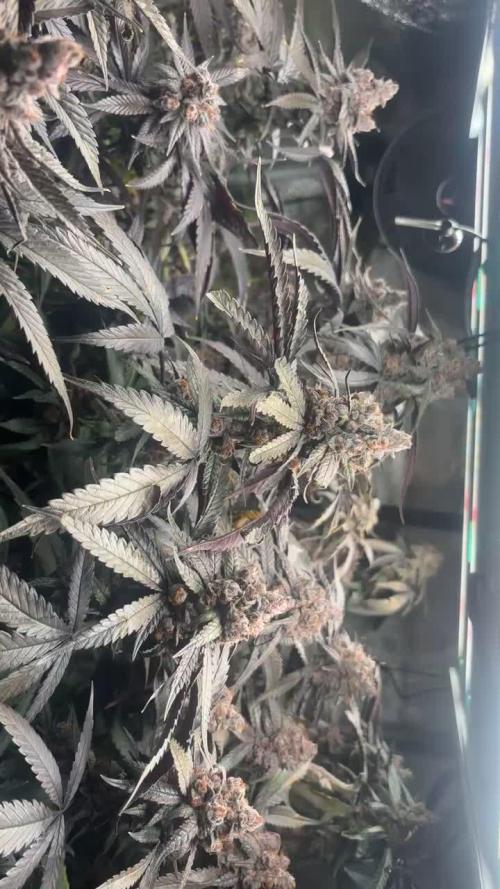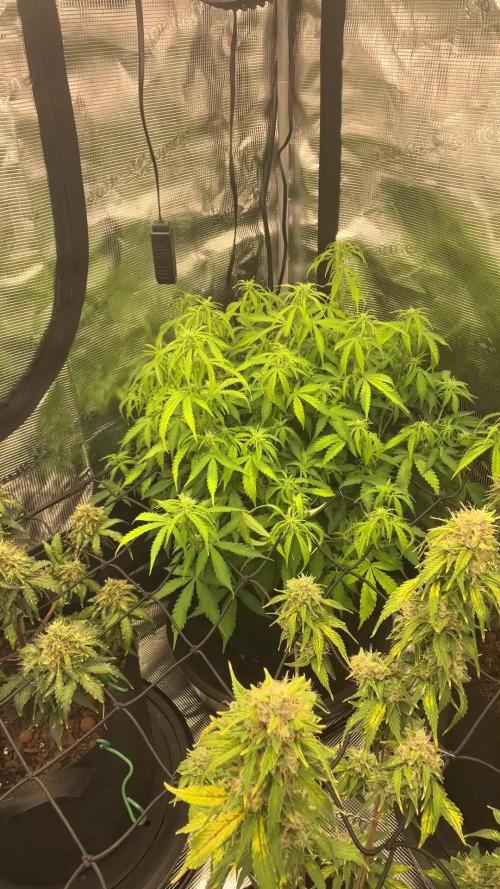The Grow Awards 2026 🏆 





























Likes
Comments
Share


@AlexJekomust
Follow
Speedy Boom auto started flowering, is now 1 month old and has grown tremendously in width, stayed as small as I wanted, I started following the Advanced Nutrients Flowering Fertilizer Program
Likes
32
Share


@LapsekiliTayfur
Follow
Day in and exit fan 15 min off 15 min on Van is full on
Night in and exit fan 30 min off 15 min on Van is off
3. Haftada Topping ve Lst Eğitimleri başladı
Likes
10
Share


@CanarianGrow92
Follow
Week 6 flowering for the ztrawberriez from fastbuds 420!
At the moment the buds are getting bigger and getting more and more thc, i dont think that a lot of time is left so we gave some extra food this werk and we will stop soon feeding to start with the flush and give only water the last week.
This week we gave amino, sugar shot, sticky fingers, bloom booster, enzymes, silica and some more master roots
Likes
2
Share


@PhinolaGreen
Follow
Woche 5
Die Ladys wurden ein bisschen entlaubt und wachsen sonst sehr stabil, bin soweit zufrieden. Noch ca 7 Wochen liegen vor uns 😊
Likes
22
Share


@BlackHatGenetics
Follow
12/7/2017 - Placed 2 SODK seeds into a shotglass full of water. When they sink they will go into a wet paper towel in a ziplock bag. Once sprouted they go into Root Riot cubes with Mykos packed in the hole where the seed, inside a clone dome just on the floor in the tent. Once they break ground and the root is hanging out the bottom of the root of the cube they will go into their final pots, 5 gallon MaxxYield (maxxyield.com) Super Pots.
soil:
the top half of the pot is Bush Doctor Coco Loco with Mykos mixed in (3 tbsp)
the bottom of the pot is Fox Farm Ocean Forest with Mykos mixed in (3tbsp)
12/9/2017 - The seeds have sprouted and are now in their root riot cubes. Day 1.
Likes
13
Share


@NicoKh
Follow
Was a little bit challenging for me, due to the outdated nutrients table, mostly on the Flowering period, also little thing like i have to fill more the pots, also with this kind a strain and also with cuts instead of seeds, may be is better to don't do the topping and don't loose time and energy on the vegetative period. At the same time, more or less about the 8th week of flowering it starts to appear something like Alternalia or Overfeed of Phosphor still don't sure. All this issues have impact the grow in terms of the size of the branches and the whole plant, the size of the buds and the hardness.
In strictly terms about the strain, the quality is out of mind, amount of resin is crazy, just have to improve my skills and get bigger crops
Likes
21
Share


@m0use
Follow
***Sponsored Grow*** = Medic || https://medicgrow.com || Grow = ***Sponsored Grow***
Not a whole lot is happening this week, still having some PH issues in the medium, I believe this is from the microbial mass I added a while back. A microbe product, PH going into the medium is around 6.5-6.8 and coming out is between 5.5-5.8, so something is acidifying it up. Also noticed the runoff last week was a bit higher at times. So lowered the feed down quite a bit, going in at 1.4EC vs 1.8 will bump it up to 1.5 and 1.6 in the next few weeks. I also added in a bit of a PK booster. nothing to crazy only 60ppm worth on a total allowance of 700PPM
Lights now running at 100% with V1 spectrum, decided to go with 100% now vs after stretch, will see how it works out.
Till next week.
***Sponsored Grow***
Official Website: https://medicgrow.com/
Facebook:
https://www.facebook.com/medicgrowled
Twitter:
https://twitter.com/medicgrow
Instagram:
https://www.instagram.com/medicgrow420/
YouTube:
https://www.youtube.com/channel/UCNmiY4F9z94u-8eGj7R1CSQ
Growdiaries:
https://growdiaries.com/grower/medicgrowled
https://growdiaries.com/grow-lights/medic-grow
Likes
Comments
Share


@AJ0000
Follow
Advanced nutrients used through out the grow
Plants are now flushed waiting on dry back before harvesting
Likes
17
Share


@Johnny_0G
Follow
She needed more nitro again but she has a beautiful even color now and I'm ready for all of these bud sites to start building up 🤤. I'm excited for her to relax and flower
Likes
2
Share


@MT_Farmer
Follow
As this will be the last time I defoliate I took away quite a few of the leaves. Maybe a little too many as most guides reccomend not taking more then 30% of the leaves in a single defoliation
Likes
9
Share


@Kushizlez
Follow
Room is starting to yellow out too soon. Going to hit with a full strength feeding today. I’m still hoping for more swell by day 29. Although for my first indoor run I’m pretty happy. I know what to do for next round and got a sick game plan. The blackberry breath pheno is looking almost done already. I hope it continues to swell because it’s already thick as fuck. I found a small underdeveloped pollen sack on the slurricane #4 that scared the shit out of me. I chopped it off and inspected the whole plant but only found the 1.
Likes
18
Share


@Chronicbastard
Follow
I have been really Busey with work so I missed last week.not really much to say though. There wasn't much stretch with these girls and only one is growing normal.the genetics are all over the place.i have been growing in pretty optimal conditions beside have 40 percent humidy through out my house.they all do look pretty nice though. I can probably squeeze 5 zips out of 4 of them.
Likes
1
Share


@HuskyHouse
Follow
Massive growth this last weekend! WOW!!! Letting her rest this week from defoliation, she is thick!
Likes
23
Share


@nonick123
Follow
Día 27 (20/05) Riego con 250 ml de Té de Compost
Día 28 (21/05) Vuelven a tener sed! Las riego con 250 ml sólo H20 pH 6.2
Día 29 (22/05) Riego con 750 ml H2O+ Regulator 0,15 ml/l + CaMg-Boost 0,25 ml/l + Startbooster 0,25 ml/l + TopBooster 0,2 ml/l- pH 6.2
NYC Diesel Auto vuelve a recibir aplicación foliar de sales de Epson (4 g/L) porque presenta de nuevo ligera clorosis
Día 30 (23/05) N/A
Día 31 (24/05) N/A
Día 32 (25/05) Las plantas no paran de crecer! 😍
Día 33 (26/05) Riego con 750 ml H2O + Regulator 0,15 ml/l + CaMg-Boost 0,25 ml/l + TopBooster 0,2 ml/l- pH 6.2
💦Nutrients by Aptus Holland - www.aptus-holland.com
🌱Substrate PRO-MIX HP BACILLUS + MYCORRHIZAE - www.pthorticulture.com/en/products/pro-mix-hp-biostimulant-plus-mycorrhizae
Likes
19
Share


@Wilstang
Follow
The grow was overall very easy, to sum it up quick she loves neits and can eat heavy. The beginning she started shaky because the first 3 weeks I only gave her pH water since my soil was precharged. She ate right thru and wanted more, more, more. I fed her almost every day and the results speak for them selves, an amazing 167 grams from a 67 day grow, including a strong 2 week flush. Topped her a total of 3 times giving me 10 tops. Overall tall plant but great strong stalk and branches to handle it. An 8 to 10 week stain, harvest right before 9 weeks. 1,000% recommended for all growers wanting that stanky dense Lemon drop. Absolute incredible lineage and smoke 💨. Gonna always be first pick 🍋🔥2412500



























